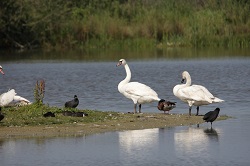New tools to increase the accuracy of biodiversity monitoring
A recent article published in the journal ‘Scientific Reports’ states, ‘Monitoring schemes provide an important source of information on biodiversity change, guiding further research, conservation assessment and planning.’ The article cites The European Biodiversity Portal, designed and implemented by the EU-funded EU BON project that offers researchers, policy-makers, and others interested in biodiversity, easy access to insights on trends and modelling techniques. The project worked on the establishment and adoption of new data standards, the development of tools to enable collaborative research and the encouragement of citizen-scientists. As a result, EU BON, by building the European Biodiversity Observation Network, has created advanced techniques for data analysis along with new approaches for modelling and strategies for future biodiversity monitoring. Practical applications for conservation and the sustainable management of resources The portal can help identify data sets relevant to Essential Biodiversity Variables (EBV), which the article states, ‘provide a framework for comprehensively representing the different components of biodiversity in order to measure change over time to identify the most important gaps in data coverage and to improve monitoring practices across time and space.’ EBVs can feed into conservation strategies: the Species Population Trend Browser, one of the six EBVs, can be used to identify the trends and status of ‘Species distribution’ and ‘Species abundance’ leading to the formulation of evidence-based policies. Asked how the portal will be useful to local stakeholders, Mr Clint Alibrandi from the Environment and Water Agency in Andalusia replied, ‘This will allow stakeholders, from a local, regional or national level, to consult or work with data and tools. It will help them to refer to relevant policies concerning biodiversity on the European scale in order to be able to better transpose them to a more local context.’ Along with providing information on biodiversity at national and regional levels, the portal sets out analytical tools, such as the Species Richness Tool and the Business Analytics Dashboard, that offer charts and aggregated data, to help conservation decision making. The best science is collaborative To enable researchers to work together more seamlessly, the portal includes an eLab, or virtual laboratory, which lets people share documents, work on the same project, and use the same web interface, all in the knowledge that each eLab has complete data privacy. Collaboration within the research community is important but it is also vital to raise awareness among the general public. The project kept this firmly in mind, with elements of the portal designed to encourage participation by citizen-scientists. EU BON has also collaborated with the European Space Agency. The ESA, amongst others, is becoming more and more committed to helping those interested in biodiversity. It can improve their capacity to use remote sensing data to monitor biodiversity trends. Talking of the use of satellite Earth Observations, Marc Paganini of the ESA said, ‘If properly used with the collection of biodiversity data on the ground, and species and habitat modelling, remote sensing can become an important and essential component of biodiversity monitoring systems.’ He added that there are many environments in which remote sensing is often the only way to conduct large scale monitoring, such as wetlands or remote areas that are hard to access. The project itself is a product of close work conducted between many different partners. Between December 2012 and May 2017, EU BON brought together 31 partners from 15 European countries, Israel, the Philippines, Brazil and more than 30 associated partners. For more information, please see: project website
Countries
Germany



